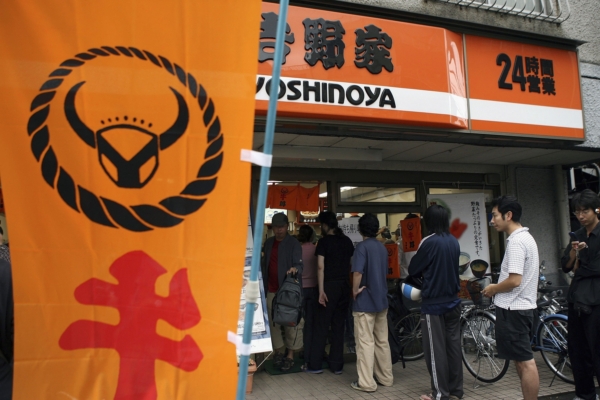Japanese fast-food chain brand Yoshinoya announced on Monday (May 19th) that it is betting on ramen as the next stage of growth engine, aiming to establish it as the “third major business pillar” following beef bowl and udon.
In unveiling its growth plan for the next five years, the fast-food chain famous for its beef bowl stated that its goal is to achieve a tenfold increase in operating profit in the ramen business, reaching 4 billion yen (approximately $28 million).
Yoshinoya stated that its goal as a multinational fast-food chain is to become the world’s largest ramen sales brand by the end of the fiscal year 2035.
According to Reuters, this new business plan comes at a time when the Japanese food industry is facing challenges including soaring prices of domestically produced rice, American beef, and the difficulties brought by price increases due to a long period of deflation and just recovering market.
The incoming CEO Tetsuya Naruse said during a press conference, “I believe ramen has enormous potential.”
Yoshinoya expects that by the fiscal year 2029, ramen business revenue will reach 40 billion yen, accounting for approximately 13% of the company’s total sales, far higher than last year’s 4%.
Yoshinoya, the second-largest beef bowl chain in Japan, was founded in 1899 and successfully developed a franchising system early on, opening its first 24-hour store in 1952. Yoshinoya’s main selling point is its beef bowl that is “quick, cheap, and delicious,” which has successfully attracted a mainly male customer base. Their beef bowl uses American-imported sliced beef belly or beef ribs, commonly known as “marbled beef.”
Currently, Yoshinoya has over 1,700 branches worldwide.
To expand its ramen business growth, Yoshinoya acquired two ramen chain store operators in Kyoto in the previous fiscal year – Takara Sangyo and Kiramekino Mirai, as well as incorporating existing brands like Withlink in Hiroshima and Setagaya in Tokyo.
Yoshinoya stated that in the future, it will drive ramen business growth through more acquisitions to achieve “inorganic growth.”

